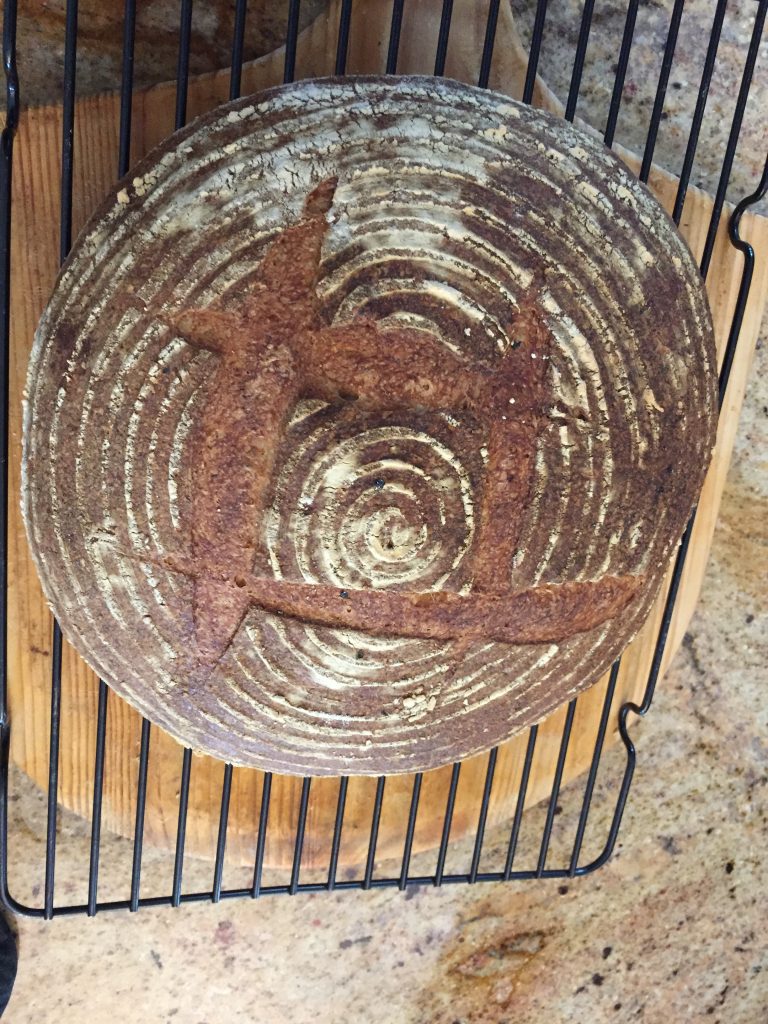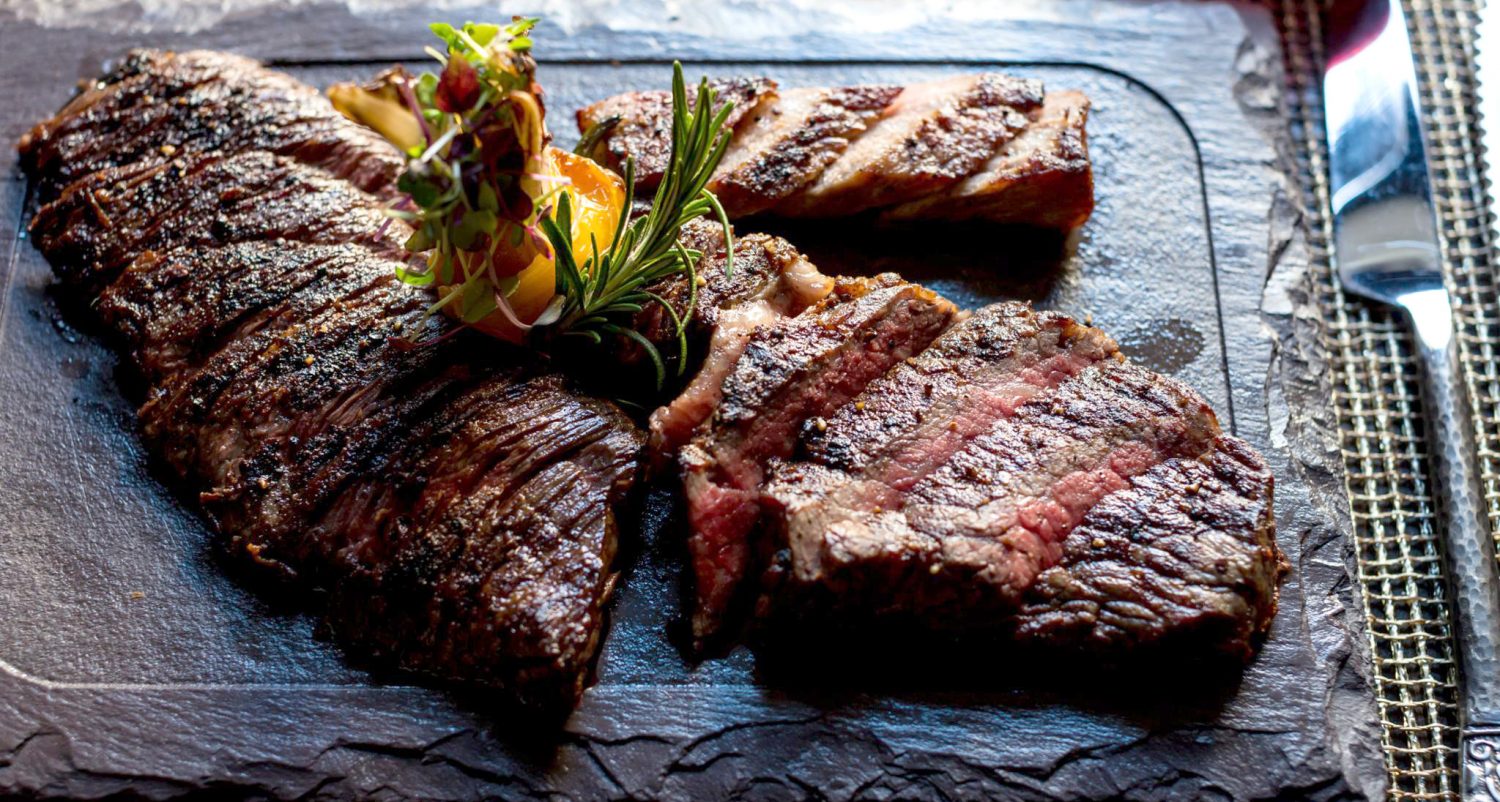I used to think that cake making etc. is an exact pursuit where you have to measure exactly and temperatures have to be exact and that bread baking is more slack in its requirements. However, I have come to realize that bakers no matter what they bake tend to be sticklers with a good healthy dose of OCD.
If you don’t want the gory details and just want the formula go down to the ingredients section. Also I use a Kitchenaid with a dough hook rather than knead for ever.
Bread makers have made up their own ways of measuring ingredients. For starters, serious bakers will never ever measure volumes, always by weight. This eliminates how tightly a cup measure is packed. Since they are weighing flour salt and yeast why bother measuring the liquids by volume. You weight the water you use!!! Most of the crusty breads like Baguettes, Batards etc originate in Europe so the measuring system has stayed in metric units. Measure it in grams, and if you are going to get serious and bake good bread, get a kitchen scale. If you think bah humbug, wait till the “Perfect baguette bug” bites you.
They also measure everything in relation to the weight of the flour used. Let me give you an example. The standard French baguette is also called a 60-2-2 baguette. So that translates to 100 parts by weight of flour, 60 parts by weight of water and 2 parts by weight of yeast and salt. Most baguettes start off with an unbaked dough weight of about 350 – 370 gms and will lose between 25 and 30 of their weight when baked. So if you want two baguettes the total weight of the dough being twice 350 or about 700 gms. To calculate the amounts of ingredients by weight, all you do is to total up the percentages, 100 + 60 + 2 + 2, 164.
So the flour weight needed is 700 divided by 164 multiplied by a hundred. Calculate the otehr weights from there. The list given below is for 2 baguettes of 350 grams each dough weight.
Ingredients
- 427 gms of Flour (AP is OK but Bread flour with a higher protein content is better)
- 257 gms water (Filtered with no Chlorine reside)
- 8.5 gms of Sea Salt
- 8.5 grams of All Purpose Yeast
Directions
- Hold back a few table spoons of water and add the rest and the flour to the mixing bowl of the mixer.
- Mix on low 2 and then on 4 to get the consistency of a shaggy dough.
- Rest on the bowl covered with a plastic wrap for about 45 minutes. The surface will start looking less shaggy and start gaining a smoother look.
- Add the yeast to one side of the bowl and the salt to the opposite side of the bowl. salt retards the yeast and so you want them to mix in the dough rather than mix immediately.
- Wet the two piles with the held back water.
- Start mixing on low and then increase speed in steps to about 5 or 6. Run on the higher speed for about 5 minutes to 7 minutes. The dough should detach from the sides of the bowl but still stick to the bottom. You can adjust by adding a few drops of water if it starts detaching from the bottom of the bowl and a bit of flour in half teaspoon increments if it sticks heavily to the sides of the bowl.
- When done the dough should be shiny and very stretchy.
- Proof as a ball in a well oiled bowl covered with plastic wrap. Deflate gently and re-proof twice after the dough doubles in size.
- Shape the baguettes and proof to double the volume.
- Score the top with diagonal slashes before baking as below
- Bake at 500°F for 20 minutes while rotating to avoid hot spots in the oven. Make sure to put a pan of water at the bottom of the over to keep moisture in the oven.
- At the end of the 20 minutes, take out the pan of water and drop the temperature down to 450 and bake another 10 minutes and rotate half way through
Bread Making… Revived
A long time ago I used to bake bread couple of times a week. Then life happened, Engineering Corporate career, two Children, schools lots of work travel etc., and it all went into hiatus. This corona virus induced isolation regimen and the resulting shortage of good bread at the stores prompted me to get the practice revived again.
The one thing I did different this time was I decided to concentrate and build my own sourdough practice; ergo, I acquired one and built another from scratch sour dough starters. I will post a separate entry on how to make your own sourdough starter. It is not that hard at all; all it requires is some patience and a few days of building it up.
There will stuff to throw away from the building sourdough, but collect all of the discards in a separate container, keep it in the fridge and use them to make sourdough pancakes. They turn out pretty darn good.
Went back into the bin in the basement where we had stored the acquired accoutrements to bread making and found my wicker banetton, my cloche scraper etc. My couche, the cloth to proof your loaves, I think is not quite there; it smells a little musty. I cannot find my Lame either… But I have made a few batches of sourdough baguettes while figuring out the oven and baking temps and the last one I made was a Miche with 50% whole wheat flour.

A summer appetizer
Spring is struggling to make its presence felt in New England even as we get to mid May. I thought I would describe a mid summer kind of appetizer that is both easy to make, pretty spectacular to look at on the table. It is very tasty and touches all of your taste sensations….
Ingredients
- Seedless Watermelon
- Feta Cheese
- Fresh Mint leaves
- Balsamic glaze(Store bought is OK)
- Flaky Sea Salt (My personal favourite is Fleur de Sel or Maldon salt)
Directions
- Chill the watermelon halves in the fridge. This will make the cubing easier. With a clean sharp knife, cube the watermelon into 1 to 1 ½ inch cubes.
- Arrange the cubes on a chilled serving plate
- Top with a little cube of Feta Cheese and a single young Mint leaf
- Keep in Fridge till ready to serve.
- Use a Paper towel to soak up and wipe off any watermelon juice that exudes from the cubes
- Drizzle Balsamic glaze an a flake of Fleur de sel on each cube just before serving.
This dish covers most your taste sensations, sweet from the melon, fruity and sour from the balsamic glaze, salt from the Fleur de sel and the herbaceous from the mint.
Goes great with a demi sec Washington state Riesling, a Pinot Grigio, or even a Prosecco. My personal favourite for this would probably would be a Rías Baixas from Spain.
I am baaaack……
I had a few mishaps including a php incompatibility issue. My problem with my original site was that I had a bunch of custom stuff that I had put in my page. These led to the site breaking when WordPress moved to a different version and it took me a bunch of time before I sat my arse down to fix the incompatibilities. It also meant I had to go through some old code that I had written which was not well commented and I had to do detective work on 10 year old code.
Life also happened with the death of a dog, acquisition of a new dog; kids out to college, back from college; starting to learn to play the violin that I inherited from my grandmother, and of course recently the coronavirus….
The hiatus and quarantining because of the pandemic allowed me the time to do things that needed to get done to get this site working again properly…

